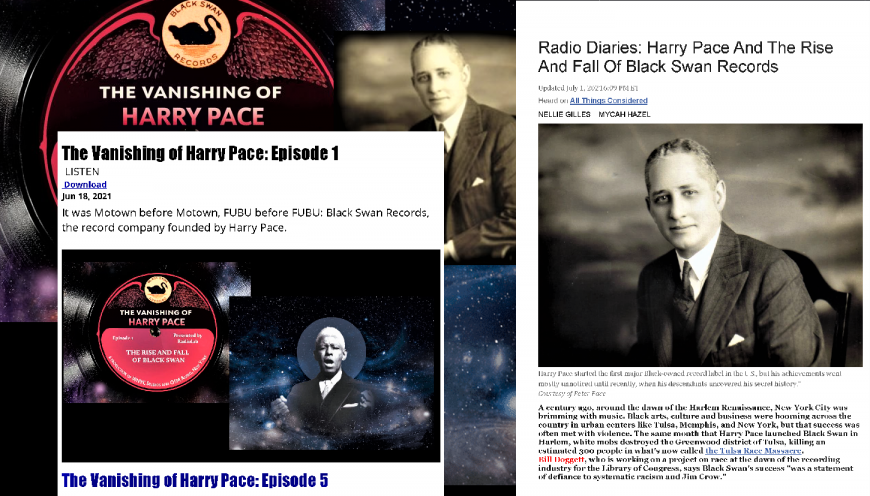
WNYC Radiolab and National Public Radio’s June and July 2021 podcast series The Vanishing of Harry Pace illuminated the extraordinary lost story of one of America’s most important, versatile, yet complicated Black business entrepreneurs in the first 40 years of the 20th Century
Harry Pace, founder of Black Swan Records, the nation’s second Black-owned entrepreneurial venture into the recording business, was the most important and influential African American business entrepreneur east of the mecca of Black entrepreneurism in America at the turn of the century, Greenwood, Tulsa, Oklahoma.
Black Swan Records was a beacon of promise, providing visibility through sound recordings for a generation of classically trained singers, musicians, and composers emerging out of the shadow of the Great Migration and the First World War.
Obscure and forgotten in 2021, these gifted artists were cultural symbols of an earlier Black racial pride who had been rejected and forbidden to record by a white recording industry dominated by Victor, Columbia, and Edison.
In a post-First World War era fraught with violent racial animus, Harry Pace’s Black Swan Records put out “open for business” signs within weeks of May 30-June 1, 1921, when Greenwood was destroyed by vigilante white supremacist mobs.
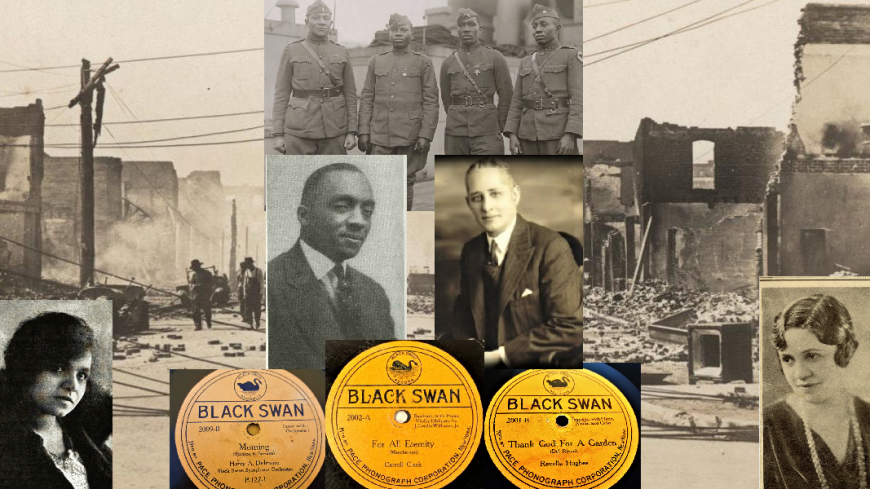
Black Swan Records illuminated the path forward for emerging Black classically trained artists by setting an example for the white-owned major labels such as Victor Records, which invited the young promising singers Marian Anderson and Paul Robeson to make sound recordings, which would launch their careers, in 1924 and 1925.
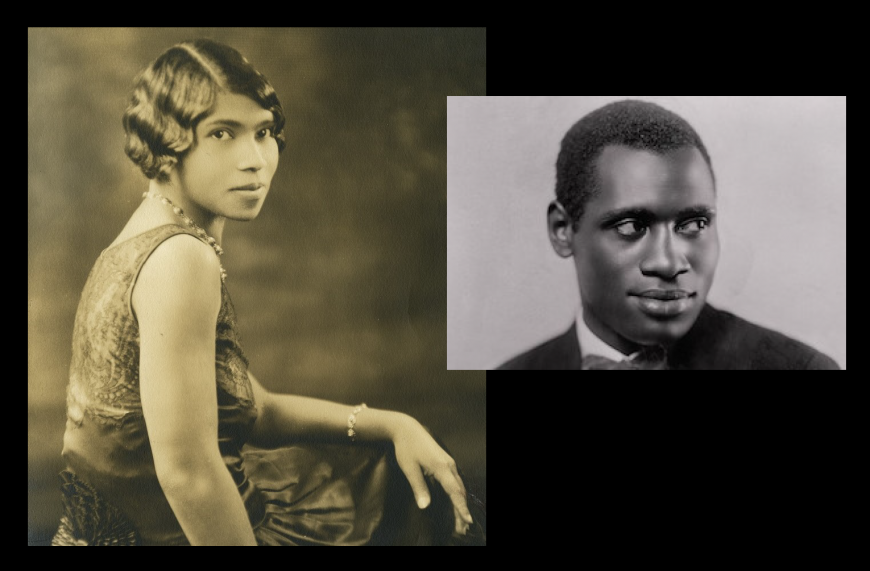
A complex story of dissonances in ideas about race, music, and the future of culture in 1921-23, Harry Pace’s Black Swan Records is also symbolic of 2021 when the performing arts industry’s diffidence in confronting a long history of racial discrimination was called to a reckoning, in the aftermath of the murder of George Floyd.
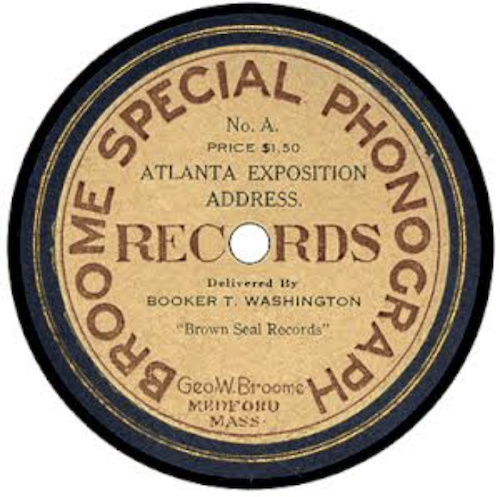
Founded in spring 1921, Black Swan Records was not the first Black-owned venture into the new bustling phonograph record industry. Between 1919-1920, George C. Broome, a Black entrepreneur and classical music devotee in Medford, Massachusetts, founded the Broome Special Phonograph Record Company. Though only in business for nine months, Broome created a critical yet elite opportunity for a small group of African American musicians, who were classically trained and recorded them in repertoire that was largely Eurocentric. There were important exceptions to this in the recordings of the important Black Canadian composer and pianist R. Nathaniel Dett in his own material, Harry Thackery Burleigh, baritone, composer, and friend of Antonin Dvořák, and a political sound recording recitation of Booker T. Washington of his Atlanta Exposition address.
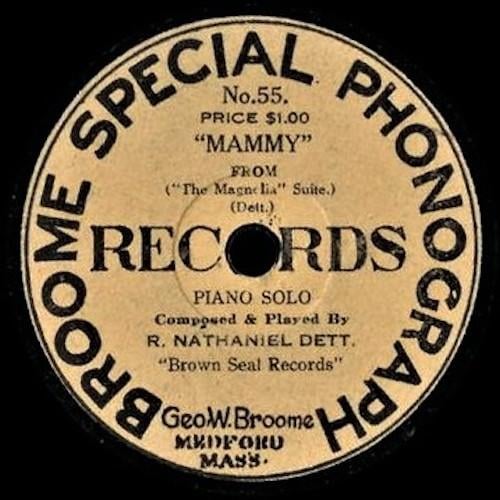
Broome had worked with the pioneering Black tenor Roland Hayes, who lived in Boston, creating a sales outlet for Roland Hayes Columbia Vanity edition homemade recordings that were only available by mail order.
By the time that Harry Pace founded Black Swan Records in Harlem, Hayes had triumphed in a European tour of 1920 and, by the mid-1920s, had become an in-demand fixture headlining The Boston Symphony Concert Artists Group.
The success of Hayes is symbolic and acts as a metaphor for the idea of “racial uplift,” the 20th century ideology of the Black elite who advocated that the way forward for African Americans faced with the extraordinary racial animus of the Jim Crow South was to prove themselves in the arts and professional fields to be as accomplished and successful as their white counterparts.
Black excellence in these metrics would, in this ideological viewpoint, prove to white America that Blacks deserved greater respect and were interested in assimilation and integration into the larger sociocultural and political American fabric.
This idea of racial uplift through the classical performing arts is at the very center of Harry Pace’s personal motivations in creating Black Swan Records. Pace’s predilection for “classic music” and the promotion of musicians and artists who would be beacons of uplifting the race through artistic excellence is tied to W.E.B. Du Bois’s idea that was both intellectual and an organizing principle for Black Americans at the dawn of the 20th Century. Du Bois’s “the talented tenth” paradigm was that the Black race would be led forward by an elite group of upper class, well-educated Black men and women already more closely assimilated to white American cultural and business norms. Harry Pace was one of the greatest examples of Du Bois’s “talented tenth.”
In 2021, a reassessment Du Bois’s racial uplift, embraced by an upper-class Black elite trying to lift the status of Black people in a lynching-prone, segregated Jim Crow American society could also be interpreted as denial.
This denial in the face of racial animus is a manifestation of internalized colonialist ideas about the inherent racial inferiority of “The Colored Race.” The ideas of racial inferiority of Black and Asian races as well as racial superiority of white and Anglo-Saxon peoples that had been promulgated since slavery were scientifically theorized by the eugenics movement of the early 20th century.
The symbolism and iconography of racial uplift is also prominent in the choice of the name of the new Black-owned record company, Black Swan. Black Swan was a reference and a dedication to the renowned African American classical operatic singer of the 1850s-70s, Elizabeth Taylor Greenfield. Greenfield was described in the press as having a voice like a swan.
Greenfield’s artistry during the Antebellum era anticipated the idea of racial uplift 50 years earlier in a statement of the determination of a free aspiring African American woman to define an idea of personal dignity and self-empowerment through music and excellence in the performing arts.

Black Swan Records’ first releases were showcases of what Harry Pace would call “classic music”, Art songs that would be performed at 1918-1921 Black society soirees and progressive Black women’s teas and fundraisers. These first releases were iconic symbols of the music of racial uplift performed by classically trained soprano Revella Hughes and baritone C. Carroll Clark.
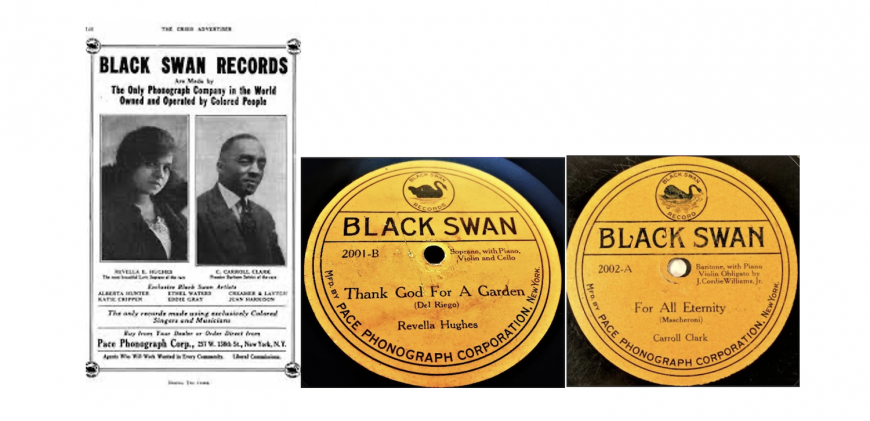
While these early recordings addressed the philosophical and political ideas of creating a label that was dedicated to presenting the ideal of racial uplift in the choices of music and artists, Pace’s choices also revealed a critical misstep that would plague the success of the label.
That is to say, Pace was motivated to create Black Swan Records in large part because of the huge financial success of Okeh Records 1920 “crossover blues hit,” Perry Bradford’s “Crazy Blues” by Mamie Smith and her Jazz Hounds.
Yet, he rejected what his fellow “talented tenthers,” the Black intellectual elite, would call “low class music” in favor of music that he and his peers felt was better suited to racial uplift ideals and to a demographic of middle-to-upper-class post-Great Migration Black professionals who had disposable income to purchase the expensive floor model Victrolas and the records to accompany them.
This dissonance of class and culture was also amplified in the makeup of Black Swan’s board of directors, which included business and professional leaders John E. Nail, the Harlem real estate pioneer (and the brother-in-law of James Weldon Johnson, the general secretary of the NAACP); Truman K. Gibson, an insurance and banking executive; Godfrey Nurse, a doctor and real estate developer; Viola Bibb, a Chicago society figure and the daughter-in-law of the Yale- and Harvard-educated co-founder of the Chicago Whip; the pharmacist Matthew V. Boutté; the businessman W. H. Willis; the accountant John P. Quander; and W.E.B. Du Bois, founder of the NAACP.

“Saint Louis Blues” sheet music; Mamie Smith; Perry Bradford and Jazz Hounds photograph aligned with Smith’s huge 1920 Okeh Records hit, “Crazy Blues”; and 1921 Black Swan Trixie Smith pioneering blues record “My Man Rocks Me With One Steady Roll,” which is credited with lending its name to the 1950s music genre, “Rock ’n’ Roll” | Credit: Bill Doggett
Before founding Black Swan Records, Pace had been a senior partner in Pace and Handy Music Publishing Company, the premier Black Tin Pan Alley sheet music publishing company that showcased the music of “The Father of The Blues.” W.C. Handy. According to his grandson, Carlos Handy (who is a well-known physicist and chairs the physics department at Texas Southern University), the composer/publisher was highly erudite and well-spoken. He has written about the glaring absence of his well-known grandfather from the operations and the board of Black Swan Records. In his telling:
W.C. Handy was not invited. He was not perceived as being among the talented tenth, or a contributor to the uplifting of the race movement, as championed by the NAACP, as represented by W.E.B. Du Bois, of whom Pace was a perceived protege. This movement believed that Blacks should abandon their culture and embrace that of white society, including its musical proclivities, particularly with respects to classical music. That is, the movement wanted to establish the equality of the Black race to the white race, in everything the latter did. This social movement was led by highly university-educated Blacks (i.e. sociologists, Black university presidents, educators, scientists, lawyers, medical doctors, opera singers, etc). W.C. Handy was not one of them. He was the first composer to proudly recognize and embrace the Blues as an affirmation of Black musical creativity and achievement; a position antithetical to the "Talented Tenth" movement.”
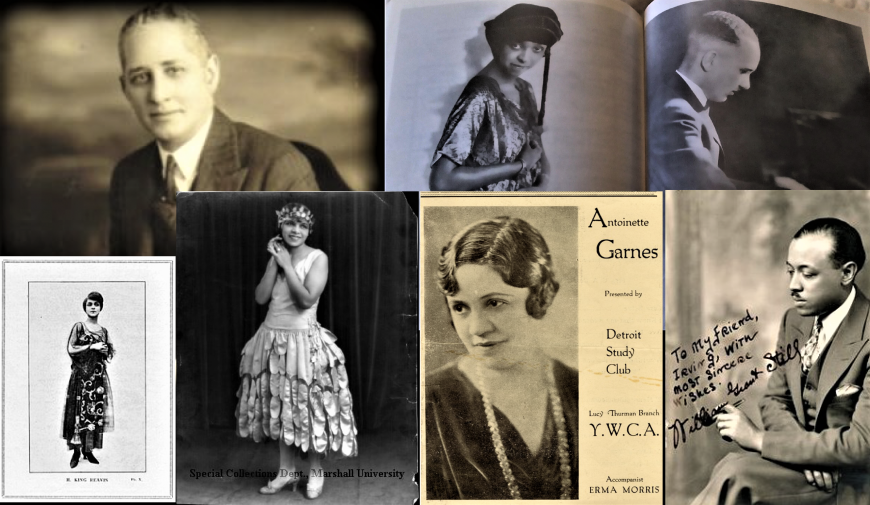
(L-R top): Harry Pace, Ethel Waters, Fletcher Henderson
(L-R bottom): Hattie King Reavis, Revella Hughes, Antoinette Garnes, William Grant Still
Carlos Handy’s insights underscore my research into the social, class and “colorism” issues that divided Black Americans from the dawn of the 20th Century through the 1950s.
Colorism is the historic and deeply controversial social and class status differentiation ascribed to Blacks who are light skinned versus Blacks who are darker skinned. Harry Pace and those of his business and artistic circles were predominantly light skinned and upper class.
The iconography of colorism is sourced out of slavery, when light skinned slaves, who were invariably the offspring of the slave master’s rape of a slave, were given preferred status, whereas darker skinned Blacks with more “African features” were relegated to the field with considerably lower status.
The slavery sourced cross-generational impact of colorism as a cultural and class divide within the Black community became magnified within the Reconstruction and post-Reconstruction Black society and expressly in the early 1920s by the Black silent filmmaker Oscar Micheaux. Micheaux, a darker skinned Black man concretized the social class divisiveness of colorism in his films by casting the hero/heroine and or martyr as the light skinned Black or “good Negro” and the villains or “bad Negro” as dark skinned.
By contrast, W.C. Handy blues, rural South sharecropper work, and convict songs, as well as the Negro spiritual in its original Black dialect, pre-1916, H.T. Burleigh arranged, Ricordi published “concert arrangements” for classical voice and piano, were viewed, in many southern fundamentalist religious circles, as “the devil’s music” and by the talented tenth as music of a plantation past that needed to be abandoned for the sake of racial progress.
Ironically, both Marian Anderson and Paul Robeson, two singers who, by the late 1930s, became almost synonymous with Pace’s ideal of racial uplift, were perhaps too dark-skinned to make their recording debuts on Black Swan. Perhaps Pace didn’t think that they, particularly Robeson with his interest in Negro spirituals, would be able to do what they eventually did so successfully. A decade after Black Swan closed its doors, Anderson triumphed in recitals with all the art songs that were the mainstays of Pace’s Black society soirees of the early 1920s.
The dissonances of class, culture, and music would haunt the success of a promising venture for Black classical musicians. Dedicated to recording classical artists brought to his attention by his music director, the young composer William Grant Still, Black Swan Records documented two of the most important Black operatic singers of this era: Antoinette Garnes and Florence Cole Talbert.
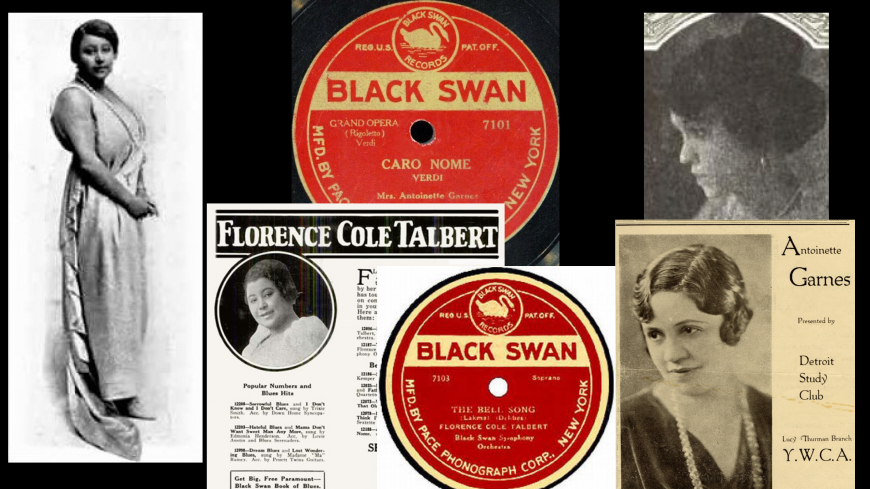
Garnes was the first Black singer to be on the roster of a leading American opera company, Mary Garden’s Chicago Grand Opera Company 1921–1922, while Florence Cole Talbert was the first Black singer to sing the title role in Aida in Europe, in 1927 for the Teatro Communale, in Cosenza, Italy.
Roland Hayes’s career was the ultimate symbol of the racial uplift movement of the early 1920s. Although he was signed to the Vocalion-Aeolian label, his presence loomed largely in Pace’s dedication to recording emerging Black tenor and baritone artists inspired by Hayes. These included the young tenors Harry A. Delmore and J. Arthur Gaines and the popular baritone, C. Carroll Clark.
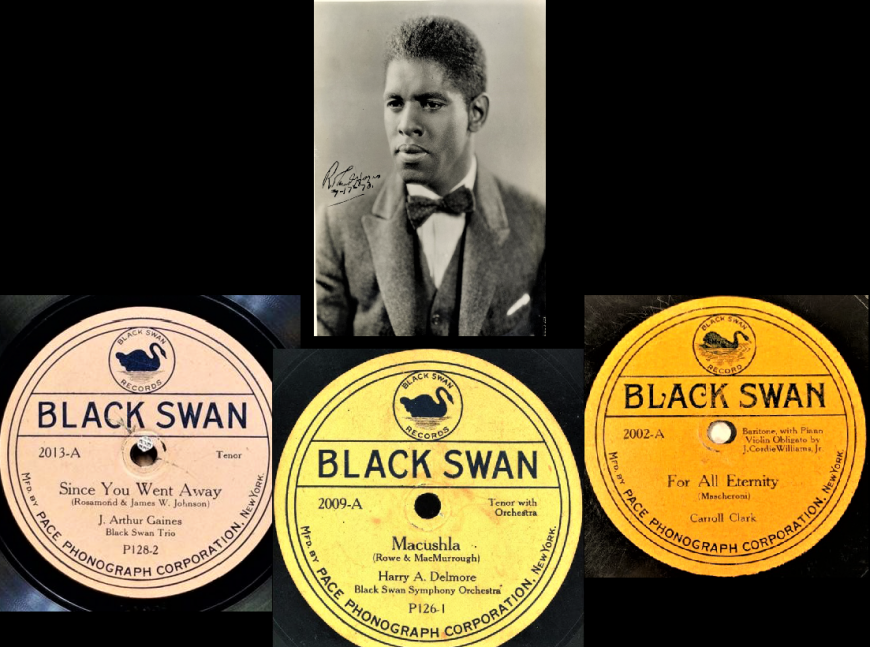
Harry Pace’s ideological dedication of Black Swan Records to be in alignment with the principles of Du Bois was crystallized with the 1923 recording of James Weldon Johnson and James Rosemond Johnson’s anthem to racial uplift “Lift Every Voice and Sing,” performed by The Manhattan Harmony Four (Black Swan 2120). “Lift Every Voice” became the anthem of Du Bois’s NAACP, captioned as “The Negro National Anthem,” and a hymn of racial pride and Black resilience in the face of the racial terror backlash to the Great Migration of Blacks from the South, seen during the Red Summer of 1919, which reached a deafening climax in the destruction of Greenwood, Oklahoma, in 1921.
The chasm between Pace’s ideals, shown in Black Swan’s first release of two art songs by Revella Hughes, and the financial success of Mamie Smith’s 1920 blues hit for Okeh Records, “Crazy Blues” caused an expansion of his plans. And with the discovery of the young Ethel Waters, a more refined pop and blues singer, Pace had an answer. Her very first recording, “Down Home Blues” and “Oh Daddy,” made later in 1921 was the runaway hit that established Black Swan’s financial solidity.
Yet, Ethel Waters was not the kind of blues singer who Harry Pace was inclined to call “the down and dirty earthy style” of the 1918–1923 popular Southern Black entertainment circuits, women like Ma Rainey and Bessie Smith.
Ethel Waters had a refined way of “putting over a song” that appealed to Harry Pace and that would make her a star on Broadway by 1924 and the first Black singer to be a sensation on the newest tech of the mid-1920s, commercial radio.
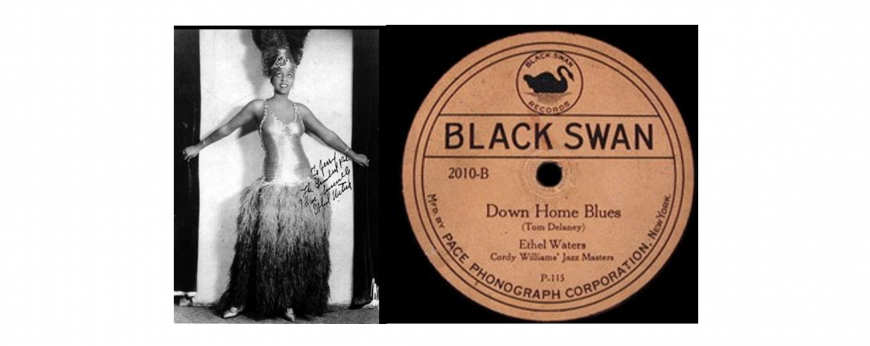
Pace was brilliant at marketing, and he created a distribution strategy for his records that employed seasonal and part-time contractual workers within the Black community including Pullman Porter railroad networks and multilayered Black community business networks, which included summer recruitment of college students as Black Swan salespeople. In this way, Pace’s marketing ideas were fashioned after the “recycling Black dollars” business model of Tulsa’s vibrant Greenwood District.
It is noteworthy that the Black Swan paradigm also anticipated, in its own way, the Black cultural pride and Black economic empowerment models which were expanded into a Black nationalist ideology of Malcolm X’s Nation of Islam of 1962–1965 and the Black Power Movement of the late 1960s-mid 1970s.
Pace had aggressively marketed Black Swan Records across the country in Black newspapers as “the only genuine company with Colored records sung by Colored artists and made by Colored people.” Yet his indefatigable efforts were not enough to overcome the obstacles put in place from the outset by the white-owned record industry which prevented easy access to a record pressing plant (he had to ship masters to Wisconsin for production) and blocked traditional channels of record distribution. To remedy this, he purchased the defunct Olympic Records in early 1922, in an unprecedented deal with its white owner, John Fletcher. This gave him access to the catalog and, presumably, to its white audience. According to the account in Paul Slade’s Black Swan Blues: The Hard Rise & Brutal Fall of America’s First Black-owned Record Label (self-published, 2021), the book the Radiolab series was based on, Olympic’s record pressing plant was on Long Island, a far better location for a New York-based label than Wisconsin. But in February 1922, a bomb was discovered in the coal deliveries, and the total destruction of the building was only narrowly averted. This was one of a series of racially motivated incidents coming from his white record label competitors who perceived the success of Black Swan Records as a threat.
But Pace’s hardships were compounded by his own business decisions, chiefly his disdain for the popular culture he had had a part in promoting at Pace and Handy Music Publishing.
The Great Migration of Southern blacks to northern cities, which began around 1914, brought to the fore schisms about the definition of “Black culture” and Black identity which were almost entirely based on class and color.
Racial uplift and the talented tenth’s predilections for a “higher class of music” were opposite to an influential Southern Black culture that embraced and celebrated the folk blues, which W.C. Handy would transcribe and incorporate into his music and “the brothel and saloon music” of Scott Joplin and Jelly Roll Morton. Pace’s core record buying audiences wanted recordings of blues and pop music that aligned with their Southern entertainment ideas and experiences. Yet, Pace insisted that Black people embrace “classic music.” He said as much in a 1922 advertisement for Black Swan Records placed in Black newspapers nationwide and shown below.
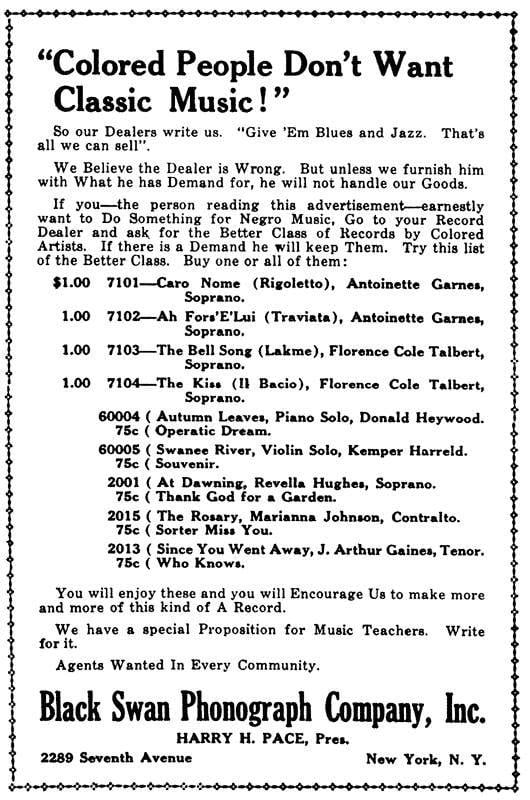
Pace also alienated his audience by rebranding white recording artists of The Olympic Records catalog with “colored sounding names and titles” to disguise them to his core record buyers, who nevertheless could tell the difference between a Black jazz/blues artist and a white jazz artist.
The final blow to Black Swan Records, by the fall of 1922 and into spring, 1923, was that his bestselling artists were stolen by mainstream white record labels (Paramount and Columbia) who could triple Pace’s fees.
By the Fall of 1922, Ethel Waters and Fletcher Henderson, two pillars of Black Swan’s success, no longer were on the roster. Blues singers Alberta Hunter and Trixie Smith followed suit. Pace’s critical miscalculation not to launch Black Swan with the financially proven hit songs of his former business partner, W.C. Handy, which had been widely recorded by white artists and jazz ensembles of the mid to late 1910s, contributed to declining sales that led to the declaration of bankruptcy by 1923.
Pace negotiated a deal with the white record company Paramount Records to purchase and release the Black Swan Records catalog briefly on their Black Swan-Paramount label, which were later absorbed and reissued as Paramount recordings.
What is profoundly significant in this remarkable story is that Pace, who obviously faced large systemic challenges by daring to defy the norms of an American society deeply enmeshed in racist ideology, still created a record company with a vision to create opportunity and visibility expressly for Black artists and did end up issuing important recordings of classical and blues/ jazz stars that today count as critically important documentation of that era.
Pace’s ideal and business model for Black Swan Records as a celebration of Black artists recording music by a Black company for a Black audience transformed an industry that had obstructed him. In perhaps one of the most profound examples of “cultural appropriation” of Black artistic genius, mainstream white record companies created a marketing niche genre they named “Race Records,” a classification imprinted on record labels and in advertising that would draw the Black audiences that had been Black Swan Records’ exclusive audience.
Yet, in the spirit of “Lift Every Voice and Sing,” Harry Pace and Black Swan Records provided visibility for Black classically trained musicians and voices, a symbolic uplift that would change perceptions within the Black community about the viability of Black classically trained talent within less than a generation. And it would change the perceptions of the artists themselves.
The results can be seen in the veneration of classically trained Black singers Anne Brown and Todd Duncan, in the Gershwins’ 1935 “folk opera,” Porgy and Bess and then the stratospheric rise of “the voice of a century,” Marian Anderson.
Generations of classically trained Black singers that followed would come to both admire and aspire to become role models like Paul Robeson, Marian Anderson, Roland Hayes, and the less-recorded Black stars emerging out of the shadows of the First World War.
Harry Pace, like George Broome and many others before him, had a dream of uplifting their generation of classically trained Black musicians into a national cultural spotlight. Those aspirations came to a symbolic fruition in the 1939 Easter Sunday Lincoln Memorial concert of Marian Anderson.




